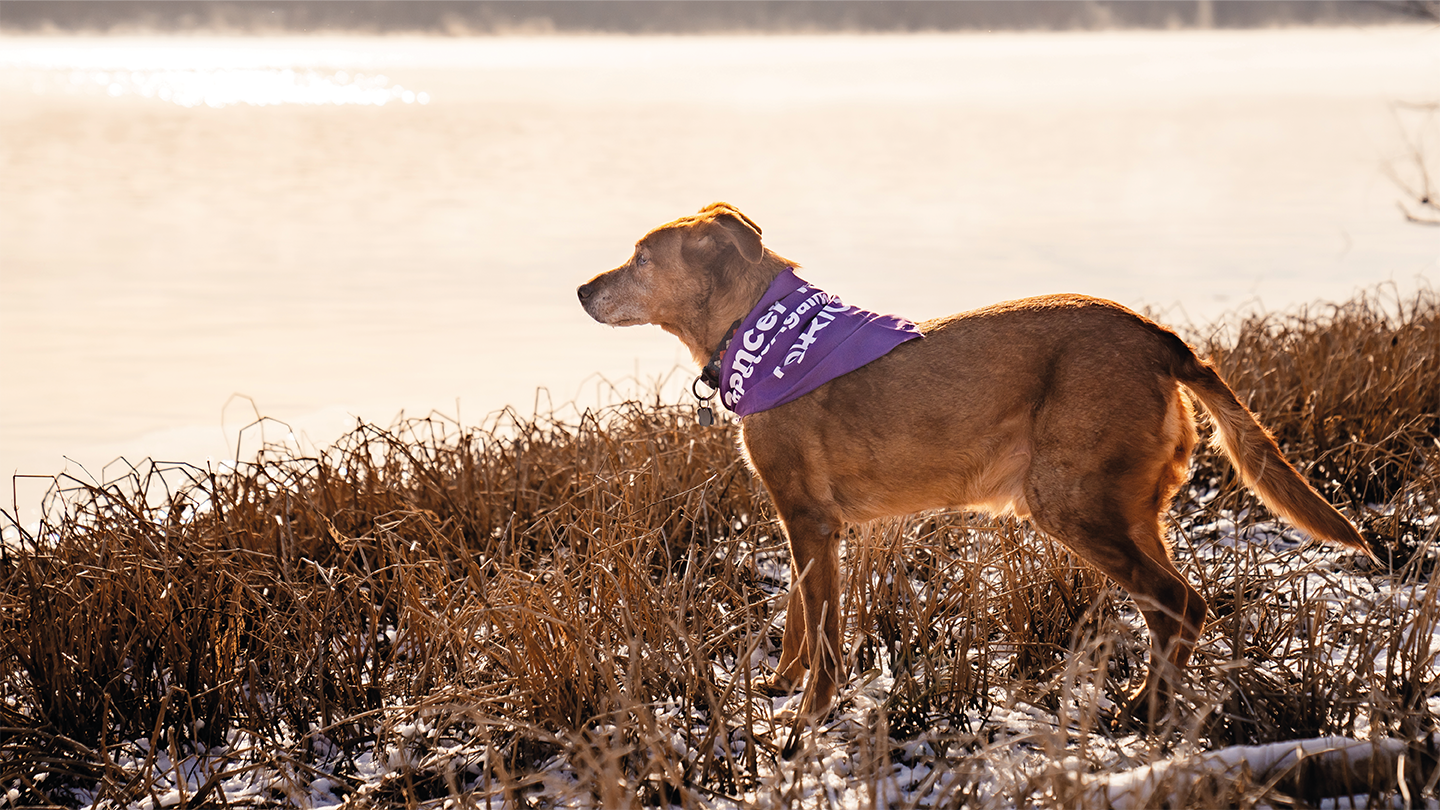
In conversation with an animal-loving scientist who is creating cancer immunotherapies for our furry companions
Personalized immunotherapies are revolutionizing cancer treatment in human patients. But did you know that the approach is also well established for dogs, cats, and horses?
We connected with Ashley Kalinauskas, founder and CEO of Torigen, to learn more about the science, its impact, and the invaluable role of digital pathology in improving outcomes for animals with cancer.
What’s your background and how did it lead to you founding a veterinary pharmaceuticals company?
I actually founded the company straight out of graduate school. The lab I was working in at the University of Notre Dame was focused on the development of personalized cancer therapies – looking at how we can use the tumor cell as the antigenic backbone for the creation of a personalized vaccine.
The technology was originally developed for humans, but I saw a pressing need for it in veterinary medicine. Unfortunately, between 4 and 6 million dogs are diagnosed with cancer each year, and over 50 percent of all dogs over the age of 10 die from cancer. Yet, more than 90 percent of owners choose not to put their pet through chemotherapy. I really felt that immunotherapy could start bridging that gap between pet owners wanting to have treatment for their pets but not put them through an ordeal.
What is the science behind your approach to cancer therapy, and how do you keep it affordable for pet owners?
Firstly, the technique doesn’t rely on genomic analysis of the cancer mutations, which is what makes precision oncology so expensive. Our technology preserves the peptides expressed on the outside of the cancer cells to interact with the body’s own T cells and activate the body’s immune system to attack the cancer cells.
This approach is different from CAR-T cell therapy, which is also personalized, but requires genetically engineering the patient’s own T cells to fight the disease. It acts quickly, but is very expensive. Our approach to immunotherapy and personalized cancer vaccines takes a couple of weeks to build an immune response, but is affordable. So there’s a tradeoff.
There’s still a lot of research required to bring this type of immunotherapy to humans, but, for animals, it’s a great option. We have multiple safety publications for dogs, cats, and horses. We also have efficacy publications for additional tumor types like hemangiosarcoma, peer-reviewed data for mast cell tumors, and additional clinical studies ongoing.
In theory, we can treat any tumor that can be surgically excised, with the understanding that response rates vary with the immunogenicity of the tumor type and the overall ability for the patient to mount an immune response.
How do diagnostics fit into your model?
The first step in developing an immunotherapy is understanding everything we can about the tumor type and how aggressive it is. Initially we used third parties to do the diagnostics, but it later became apparent that bringing pathology in house would create a better business model, improve turnaround times, and get us access to all the tumor material, so in 2024 we launched Torigen Specialty Pathology (TSP).
Once we established TSP, it was important to me to have the best of the best veterinary pathologists working with us. So, not wanting to be limited by geography, introducing digital pathology was the obvious way forward.
What are some of the challenges of precision diagnostics?
For us, precision diagnostics leads to precision therapeutics. We need to understand exactly what malignancy we're dealing with, what is being overexpressed on those tumor cells, how aggressive the cancer is, and whether we managed to remove all of it in surgery.
And we have to do that with a very limited budget. In human oncology, most surgeries collect enough tissue for hundreds of potential slides to assess whether all of the tumor was removed. On the veterinary side, on average, for every tumor sample you typically make two and a half slides. That's all you've got. And that’s because it's expensive, and the owner is paying for it.
So there does have to be that understanding that we have limited information to look at and we need to get it right. Having digital diagnostic options allows us to have a better viewpoint of exactly what we’re looking at in totality, while keeping down the cost for the pet owner.
Our pathologists need to review that our technicians selected the representative tumor sample with the highest number of tumor cells in it – that allows us to ensure that the paired diagnostic and the paired therapeutic go together hand in hand.
What is the impact of personalized cancer immunotherapy on your animal patients?
Because so few owners want to put their pet through chemotherapy, our impact is in providing another option for them to consider. With any cancer therapy, the more combinations of different approaches that you have, the better the outcomes will be.
For a lot of pet parents, after their animal has surgery for their tumor, they are just waiting for that tumor to come back. By pairing surgery with our immunotherapy, we can treat earlier stage tumors, spare animals from chemotherapy, and give owners more time with their pets.

Could you share a memorable patient case that demonstrates the value of personalized cancer immunotherapy for animals?
My favorite is the story of Max, an Airedale Terrier from Washington, who had oral squamous cell carcinoma (SCC). While SCC is more commonly seen on sun-exposed skin in humans, in dogs it often appears in the mouth – particularly on the gums, tongue, or tonsils. These tumors can be locally aggressive and challenging to treat surgically depending on location. Interestingly, like many epithelial tumors, SCCs in dogs can sometimes express immune targets such as EGFR or PD-L1, making them a potential candidate for immunotherapeutic approaches.
Max was being treated for the cancer but the tumor just kept coming back, so the veterinarian oncologist recommended trying our personalized immunotherapy approach. Typical overall survival for oral SCC is around 6 months for an aggressive case like this his, but Max enjoyed another 2 years of life after immunotherapy.
The case is memorable to me because his owners kept us updated on Max’s progress right from the initial surgery to when he passed. Even after that, they kept in touch, sending us photos of their new puppy, Augie. We love to display photos of patients we’ve helped in our offices, and Max and Augie are right up there.





